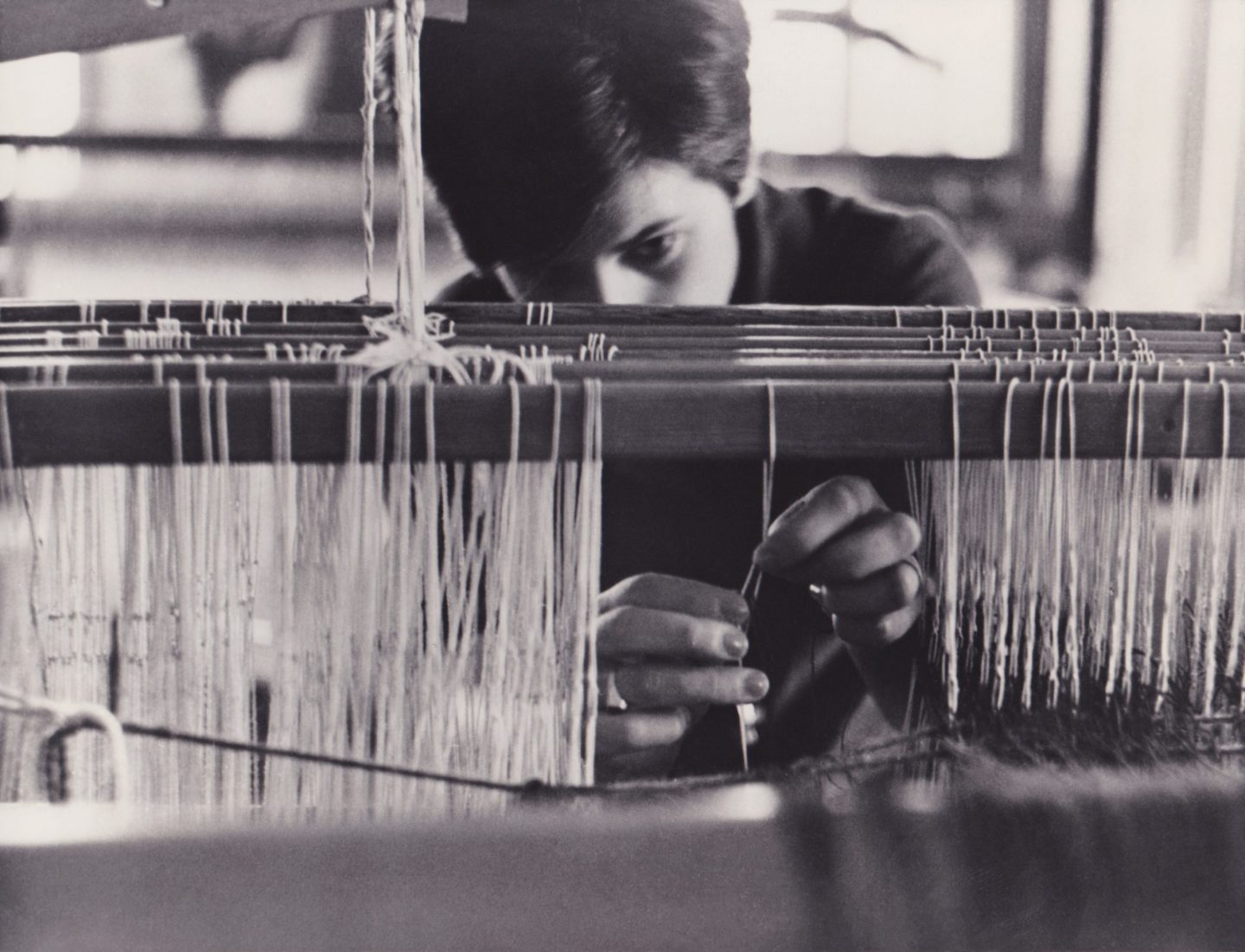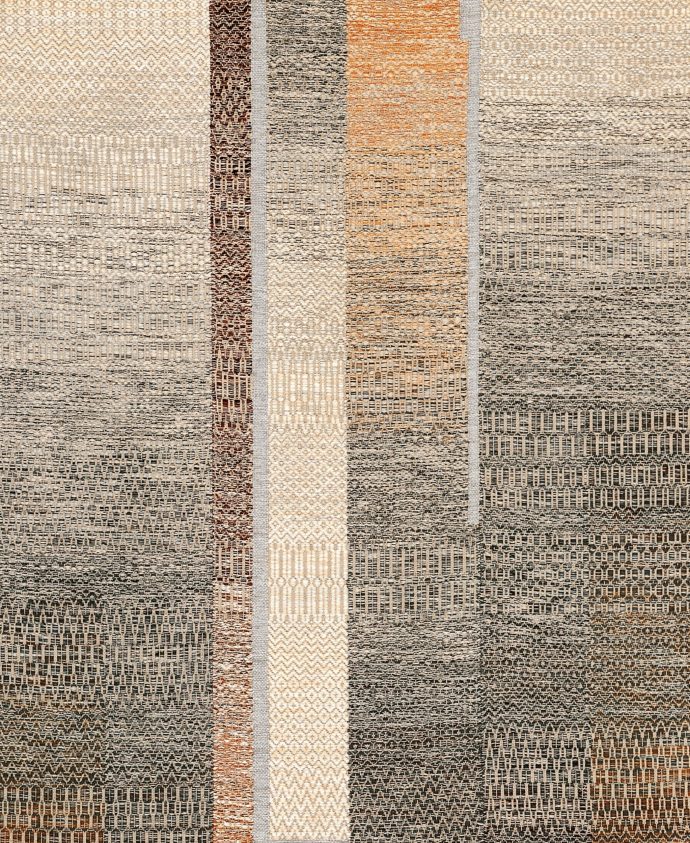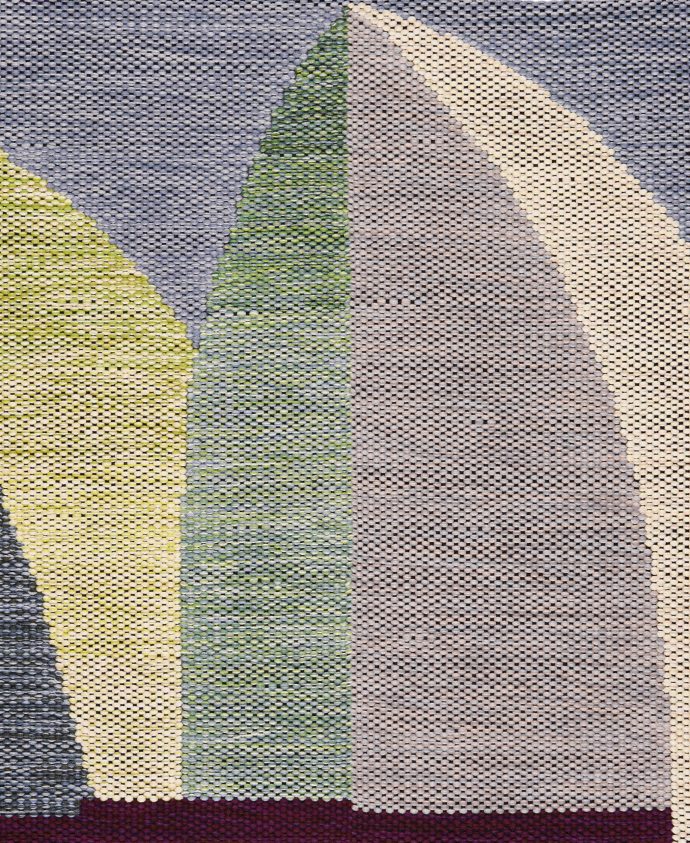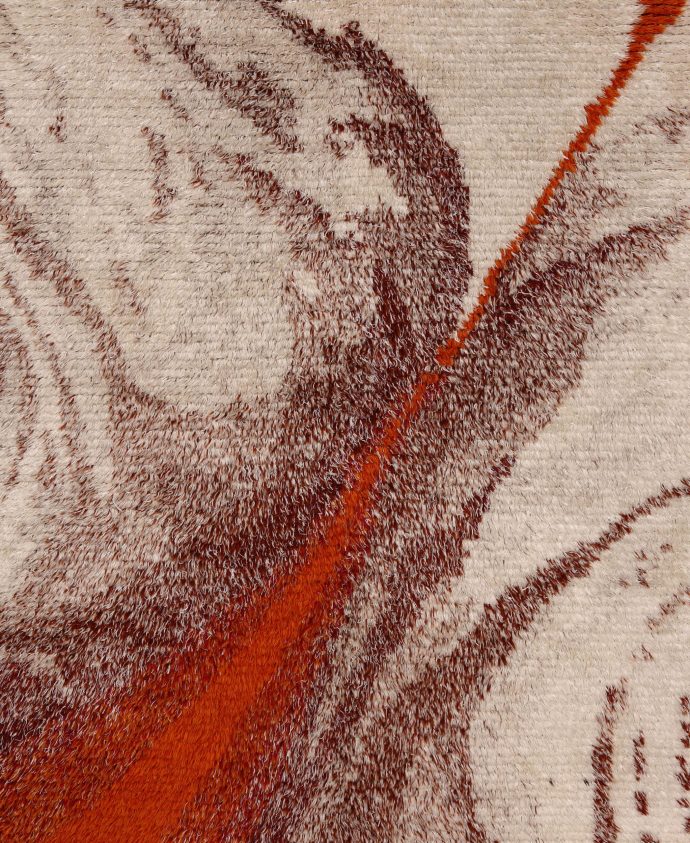Concept
“Renata Bonfanti. Weaving joy” is an exhibition curated by Marco Romanelli with Luca Ladiana and Alessandro Bonfanti and dedicated to the work of the designer and author who was one of the finest and certainly chronologically among the first examples of Italian textile designers.
The exhibition brings together a complete selection of works by the Vicenza-based artist ranging from the first hand-knotted long-pile rugs which were strongly influenced by the Informal movement, to the poetic Algeria collection from the late 1950s and up to the most recent mechanical loom woven rugs which the artist believed would never replace manually woven ones but which would clearly (and polemically) stand alongside them. As she said
“I have always tried to organize my work so that the two techniques are interchangeable. I believe that an excessive interest in manual production, of an emotional nature, and the a priori rejection of new technologies may well hinder research, as it seems absurd to me to expect industrial production to cover all roles” (R.B., 1975).
Bonfanti’s career path is an interesting reference point for Italian design. Among the many variants of design found in Italy after World War II, it has to be admitted that weaving was very little practiced and as such, Bonfanti had to go abroad to Northern Europe to complete her training.
Penalized by a reductive interpretation of the role of women, it was difficult to find examples of textile design at major national and international occasions such as the Milan Triennials and the Venice Biennials and all the more so when the works involved moved away from traditional manufacturing procedures, albeit at a high level as in Bonfanti’ case, to decisively enter the world of art. In this sense, Bonfanti was an exception and right from the beginning of her activity, took part in the most important exhibitions and the then current Milanese cultural debate.
Two factors that significantly assisted Bonfanti’s work can be identified: on the one hand, there was the unconditional support of Gio Ponti, one of the giants of Italian design; then there was her association and friendship with Bruno Munari.
A third factor, however, should not be underestimated, namely Bonfanti’s constant and productive presence at the Compasso d ‘Oro, with honourable mentions in 1956, 1960, 1979 and 1989 and her eventual award which she received in 1962.
Marco Romanelli
Crediti
curated by Marco Romanelli
in collaboration with Luca Ladiana and with consultancy by Alessandro Bonfanti
graphic design of the exhibition and the catalogue, Giuseppe Basile
exhibition design by Marco Romanelli and Luca Ladiana
work supervision by Matteo Vercelloni
set up Merlo SpA
we would like to thank all the institutions, archives, companies and private organisation who have collaborated on the completion of the project, in particular:
Laboratorio Renata Bonfanti, Mussolente (Vicenza), collezione privata, Alessandro Bonfanti, Bassano del Grappa, Archivio Fondazione Jacqueline Vodoz e Bruno Munari, Milano, Archivio Fondazione ADI Collezione Compasso d’Oro, Archivio Marco Romanelli, Milano
technical sponsor
Merlo SpA











